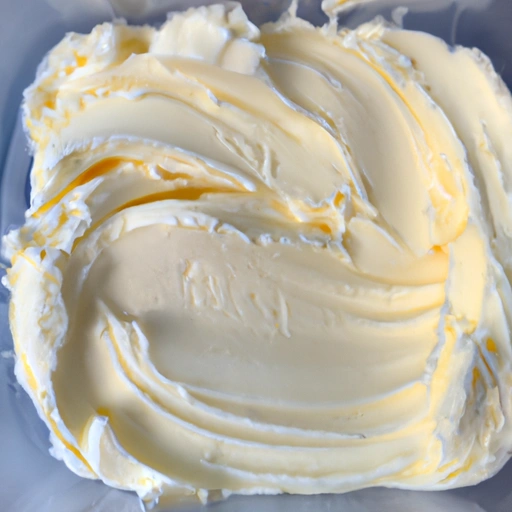Whipped Butter
Description

Whipped butter is a type of butter that has been aerated by whipping, incorporating air into the butter and resulting in a product that is lighter, fluffier, and more spreadable than traditional stick butter. It's created by mechanically agitating butter, often with the addition of nitrogen gas, which makes it less dense and easier to spread even when chilled. Whipped butter typically has a volume that is roughly 1.5 times greater than the original butter from which it was made, due to the air that has been whipped into it.
Common uses
Whipped butter is commonly used as a spread for bread, bagels, and muffins, as a topping for pancakes, waffles, and baked potatoes, and as an ingredient in various recipes where a lighter consistency of butter is desired.
Nutritional value
Calories
A serving of whipped butter (1 tablespoon, or about 9 grams) typically contains approximately 67 calories.
Protein
Whipped butter contains a trace amount of protein, less than 0.1 grams per tablespoon.
Fat
The fat content of whipped butter is around 7.5 grams per tablespoon, which is lower by weight compared to regular butter due to the incorporated air.
Carbohydrates
Whipped butter contains negligible carbohydrates, less than 0.1 grams per tablespoon.
Vitamins
It provides small amounts of fat-soluble vitamins such as vitamin A and E.
Minerals
Whipped butter contains trace amounts of minerals such as calcium and sodium.
Health benefits
Whipped butter offers the same health benefits as regular butter, albeit in smaller amounts due to its lower density. It provides vitamins A and E, which are essential for vision and skin health, and antioxidants that help protect cells from damage.
Potential risks
Like any butter, whipped butter is high in saturated fats which, when consumed in excess, can contribute to heart disease. Its lighter texture may also lead to overconsumption, as it's easier to spread and enjoy in larger quantities.
Common recipes
Whipped butter is a versatile ingredient used in recipes ranging from savory garlic bread to sweet frostings for cakes and cupcakes.
Cooking methods
It can be used in sautéing and pan-frying, although it's less commonly used for these methods than regular butter due to its lower fat content.
Pairing with other ingredients
Whipped butter pairs well with fresh breads, pastries, and any dish where a lighter buttery texture is desired.
Summary
Whipped butter is a delightful and versatile ingredient that can be used in a myriad of culinary applications. It's appreciated worldwide for its light, airy texture and easy spreadability. While offering the same rich flavor as traditional butter, it is easier to work with and lends itself to a variety of pairings and cooking methods. However, like all butter, it should be consumed in moderation as part of a balanced diet.